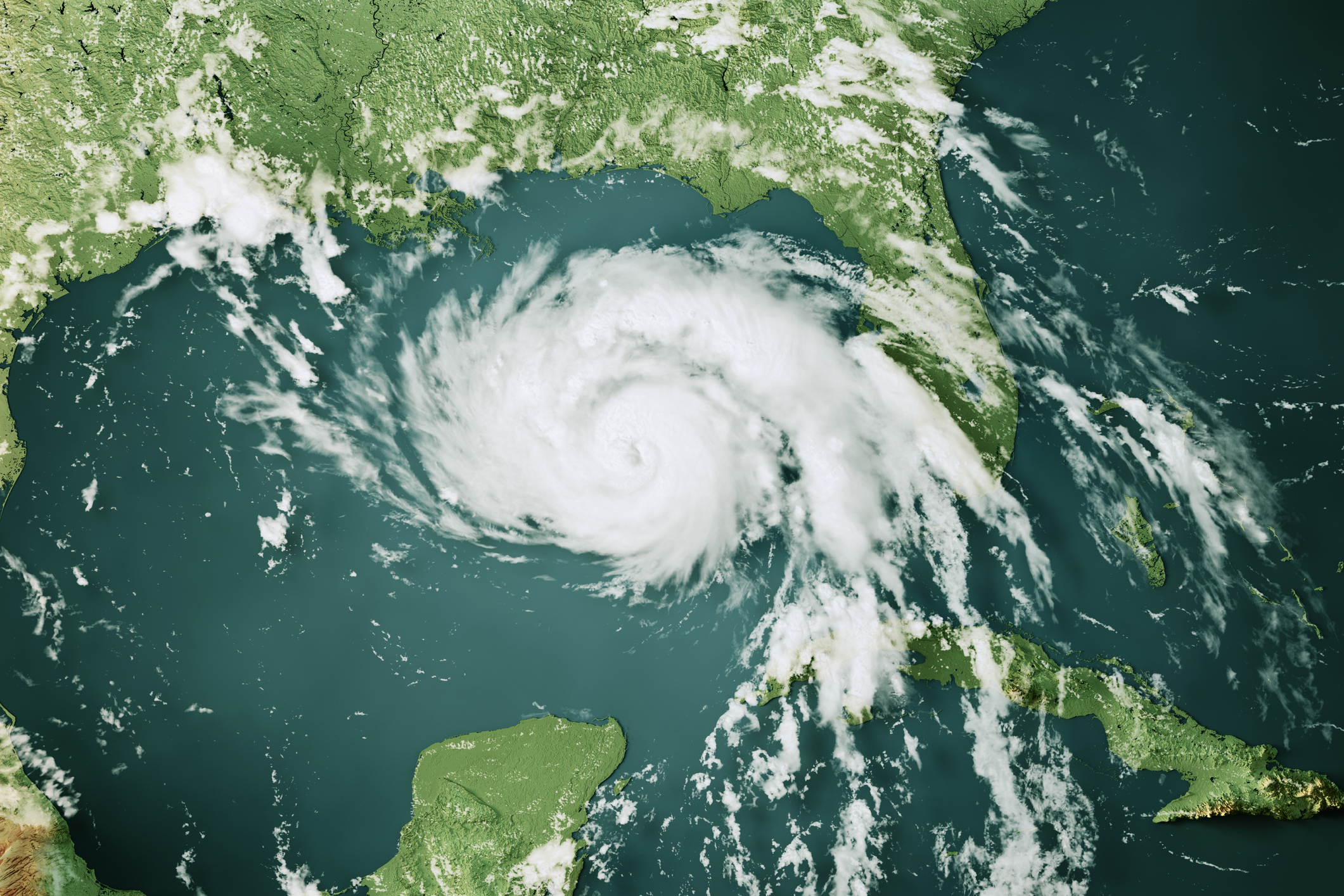
Map showing a hurricane about to make landfall on the coast of the United States
Solutions to Hurricane Impacts
Grade 5
This lesson focuses on two main ideas:
- Solutions to the damaging effects of hurricanes
- Analyzing when hurricanes typically occur
Procedure
INTRODUCTION (15 minutes)
Read the introduction to students and review new vocabulary. Students will watch the “Maryland Farm and Harvest - Episode 909” video. After the video, have a discussion around the essential questions and thinking questions aligned to the topic and video. Discuss the career connections related to hurricanes with students.
EXTENSION (15-30 minutes)
Complete extension activities with students, as you see fit.
ASSESSMENT (15 minutes)
Have students apply their newfound knowledge by completing a Summative CER on the lesson using evidence from the video and activities as support.
REFLECTION (10 minutes)
Have students complete a reflection.
Standards
4-ESS3-2. Earth and Human Activity
Generate and compare multiple solutions to reduce the impacts of natural Earth processes on humans.
- Science and Engineering Practices
Constructing Explanations and Designing Solutions
Constructing explanations and designing solutions in 3–5 builds on K–2 experiences and progresses to the use of evidence in constructing explanations that specify variables that describe and predict phenomena and in designing multiple solutions to design problems.- Generate and compare multiple solutions to a problem based on how well they meet the criteria and constraints of the design solution.
- Disciplinary Core Ideas
ESS3.B: Natural Hazards
- A variety of hazards result from natural processes (e.g., earthquakes, tsunamis, volcanic eruptions). Humans cannot eliminate the hazards but can take steps to reduce their impacts.
ETS1.B: Designing Solutions to Engineering Problems
- Testing a solution involves investigating how well it performs under a range of likely conditions. (secondary)
- Crosscutting Concepts
Cause and Effect
- Cause and effect relationships are routinely identified, tested, and used to explain change.
Connections to Engineering, Technology, and Applications of Science
Influence of Engineering, Technology, and Science on Society and the Natural World
- Engineers improve existing technologies or develop new ones to increase their benefits, to decrease known risks, and to meet societal demands.
Standard 1
Environmental Issue Investigation and Action:
Environmentally literate students investigate environmental issues in order to develop and implement local actions that protect, sustain, or restore the natural environment.
Summative CER
Option 1:
Construct an argument on what you believe is the best solution that people can use to prepare themselves for the effects of hurricanes. Use evidence and reasoning from the videos and activities to support your choice.
Option 2:
Explain the factors that should be considered when choosing to prepare for a hurricane. Use information from the videos and activities to support your explanation.
Reflection Questions
- How can I prepare myself and my family for a hurricane?
- When during the year should we be most concerned about hurricanes hitting the United States?
- What solutions already exist to help reduce the damaging effects that hurricanes can cause?
Summative CER Rubric
| Scoring Rubric Components | No Response Score Point 0 |
Not There Yet Score Point 0.5 |
Beginning To Score Point 0.75 |
Yes Score Point 1.0 |
|---|---|---|---|---|
| CLAIM | The claim is missing. | The claim is incorrect or irrelevant. | The claim partially takes a position on the topic or issue addressed within the prompt. | The claim takes an appropriate position on the topic or issue addressed within the prompt. |
| EVIDENCE | There is no type of evidence in the response. | The evidence is irrelevant or does not support the claim. | The evidence partially supports the claim and demonstrates some understanding of the topic or text, using appropriate sources. | The evidence supports the claim and demonstrates a strong understanding of the topic or text, using appropriate sources. |
| REASONING | There is no use of words, phrases, and clauses to create cohesion and to clarify the relationship between the claim and evidence. | Use of words, phrases and clauses fail to show or explain any relationship between the claim and evidence. | Scientific words, phrases, and clauses used lack cohesion but partially clarify the relationship between the claim and evidence. | Appropriate scientific words, phrases, and clauses are used to create cohesion and to clarify the relationship between the claim and evidence. |


